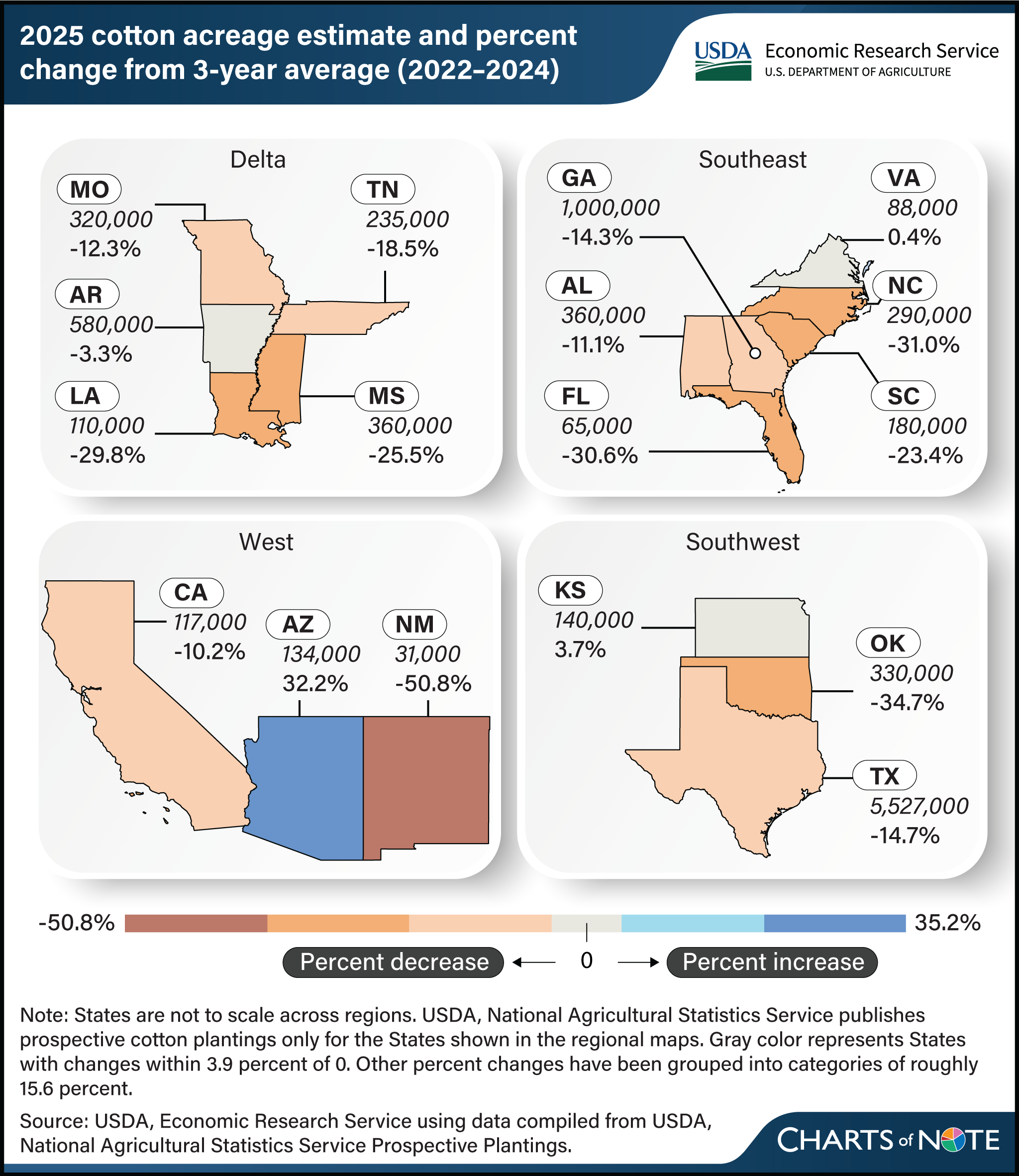U.S. cotton planting projected to reach 10-year low, with net declines across all regions
- by Taylor Dew and Leslie Meyer
- 5/21/2025

Cotton is largely planted in the southern United States, a region often referred to as the Cotton Belt. This area is divided into four regions—the Southwest, Southeast, Delta, and West—each with its own climate and farming practices. According to USDA, National Agricultural Statistics Service’s Prospective Plantings report released March 31, 2025, acreage planted to cotton is projected at its lowest level since 2015, and area planted in each of the four regions is forecast to fall below its 3-year average (2022–24) in 2025. The Southwest, which includes Texas, continues to hold the largest share of total U.S. cotton acreage but also faces the largest acreage decline compared with its 3-year average. Farmers in Texas are expected to plant nearly 1 million fewer acres of cotton in 2025 compared with its 2022–24 average, as lower cotton prices have encouraged acres to shift into corn and sorghum. In the Southeast, cotton area is also expected to decline in response to weak cotton prices, with acreage shifting to other crops, including corn and peanuts. Georgia, the largest producing State in the region, accounts for 39 percent of the region’s decline. The Delta region is likewise expected to see cotton acreage fall because of an anticipated increase in corn acreage. The West, which has the least acreage of all four regions, is reporting the smallest year-to-year change, with improved water availability and favorable crop rotation opportunities supporting an increase in plantings in Arizona. Some exceptions to the overall trend do exist, with Arizona, Virginia, and Kansas all expected to plant more cotton than their respective 3-year averages, as farmers adjust planting decisions to their own relative prices, weather, and agronomic conditions. This chart is drawn from the April 2025 Cotton and Wool Outlook, published by USDA, Economic Research Service.

